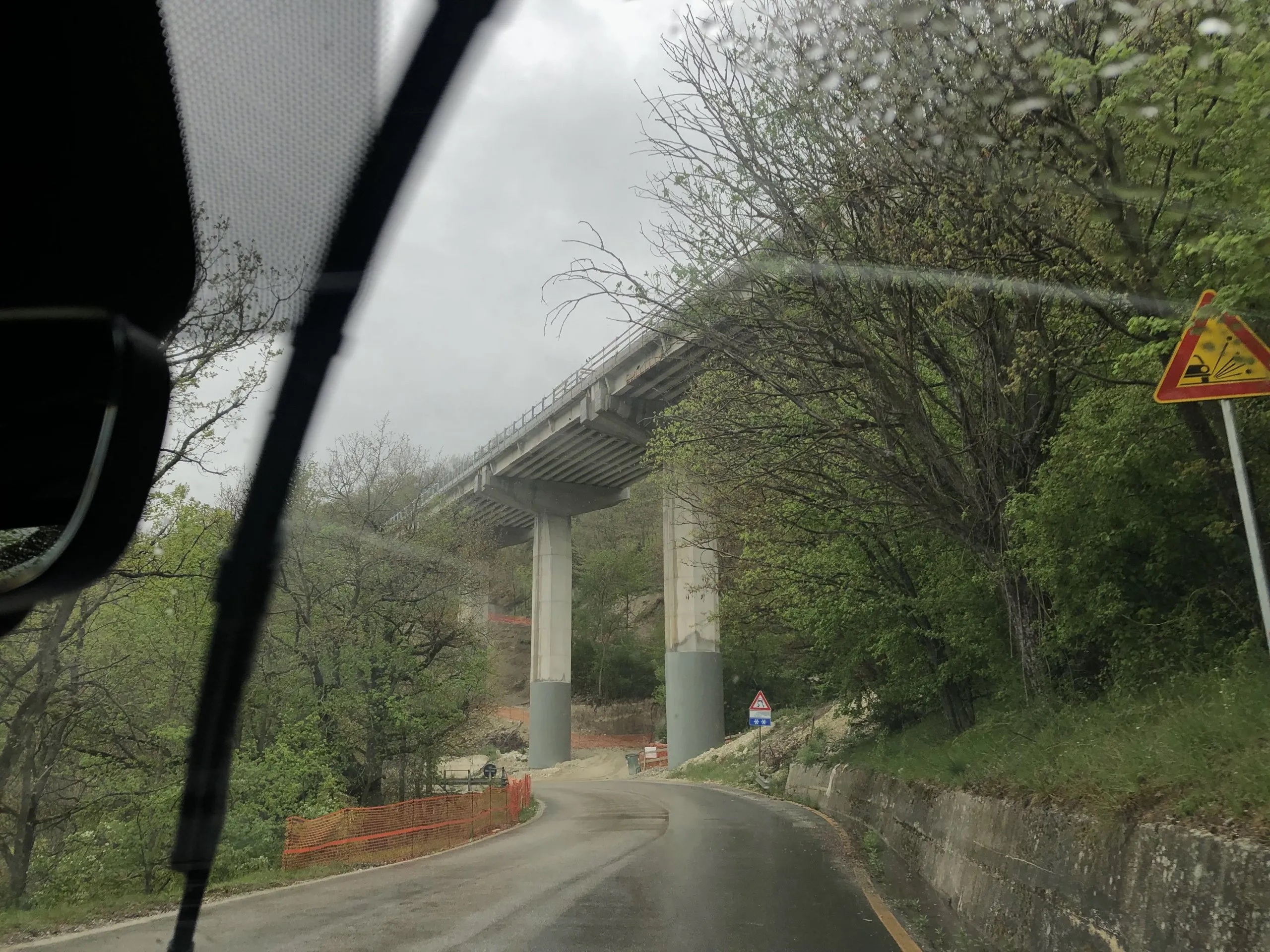Visit Date: May 4, 2019, 10:00 a.m.
Since we started touring the beautiful villages of the Marche region, we have occasionally seen churches under restoration, which were affected by the earthquake that hit central Italy three years ago, in August 2016, if not all.
What is the Central Italy Earthquake?
The Central Italy earthquake was a 6.2-magnitude earthquake that struck near Norcia in the province of Perugia in central Italy at 3:36 a.m. on August 24, 2016.
Here is the information from Wikipedia, most of the residents were asleep because this was a pre-dawn earthquake, and many were trapped under the building.
The area near the epicenter of the earthquake is bordered by the three provinces of Umbria (Perugia), Marche (Ascoli Piceno), and Lazio (Rieti). It was reported that the damage was particularly severe in Amatrice (Province of Rieti, Lazio), which was known as a tourist destination and attracted many tourists.
Can you get to Umbria from Ascoli Piceno?
The day before this day, we stayed in Ascoli Piceno, a town located almost on the border of Marche and Umbria, and we were wondering one thing when we stayed there. That was whether I could go back to Umbria, where I stayed three days ago, by crossing the mountain on the next day, that is, the 4th.
To get to Umbria from Ascoli Piceno in the Marche region, it is necessary to take the motorway that runs between Ascoli Piceno and the city of Spoleto in Umbria. But it is over this mountain into Umbria that was the epicenter of the great earthquake of three years ago.
Then, I checked Google Maps to see if there was a passable route between Ascoli Piceno and Spoleto, and according to Google, the highway was blocked, but if I detoured to a public road, we could cross the mountain.
This was a relief, but when I looked at the satellite photo on Google Maps, I saw the situation. I was shocked. And I was worried if we could really pass through.
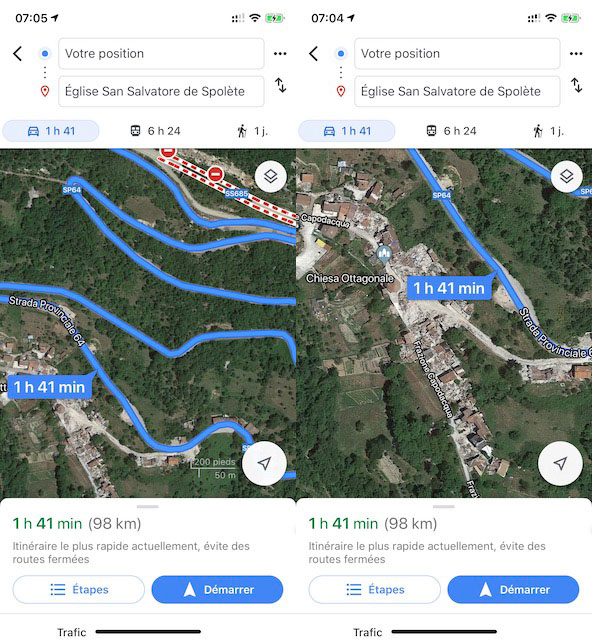
Then we searched the internet for the current (at the time of our trip) motorway conditions in Italy. It seemed that the information from here was the same as that from Google Maps. So I decided to stay in Ascoli Piceno and took the route from Ascoli Piceno to Umbria over the mountains. In recent years,
In recent years, I generally don’t make a detailed schedule before traveling, in particular accommodation, before I leave. I decide where to stay depending on the situation and where I am at the time. Usually, I decide a couple of days in advance, or on the day if it is difficult.
The next morning where we arrived there, we would have liked to spend the morning exploring Ascoli Piceno, as we hadn’t had a chance to fully explore at the previous day.
But, as it was raining that day and the road conditions were worrisome due to the past earthquakes, so we gave up on sightseeing in the morning and headed for Umbria immediately after checking out of the apartment.
It wasn’t raining on the way from the apartment to the parking lot, but it started to rain right after we got in the car and left the city.
The traffic on the highway to Umbria was not too heavy, but it was more than expected. For a while the speed was slow because of the many ups and downs and climbs, but the road looked solid and completely safe to drive on.

Passing through the area with the most claw marks
However, as Google Maps had indicated, we had to detour to a local road since the highway was under construction on our way to Umbria. Furthermore, the local road leading from here was very twisty, as far as I could tell from the map, and the rain was getting even stronger, so I was getting more and more worried if we could really pass even here.

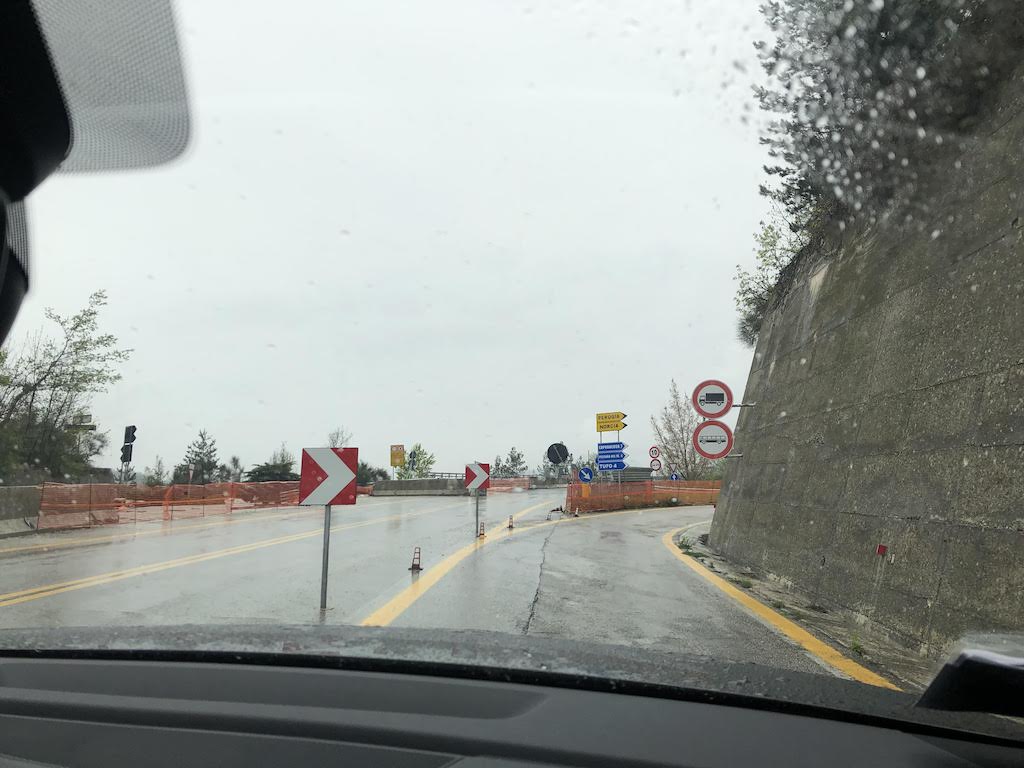
Fortunately, when we actually drove, the roads were not as narrow and the hills were not as steep as we had expected, so it was easy to drive. However, after a while, we were confronted with many buildings and roads that had collapsed due to the earthquake and had not yet been repaired. It was a very painful landscape.
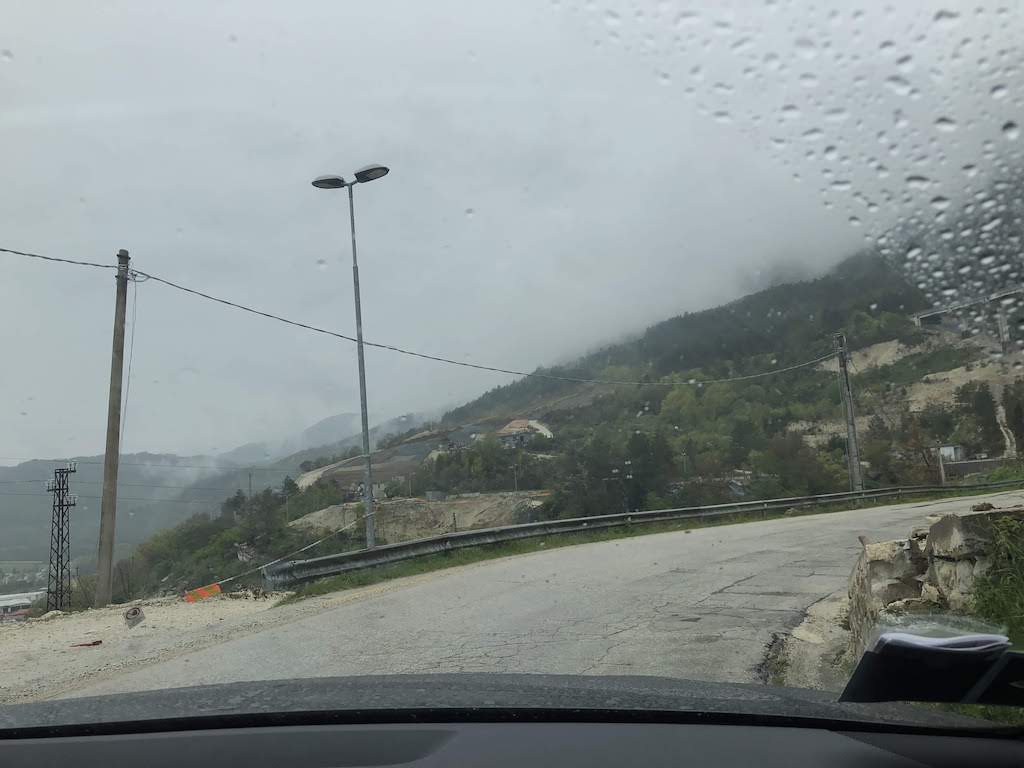

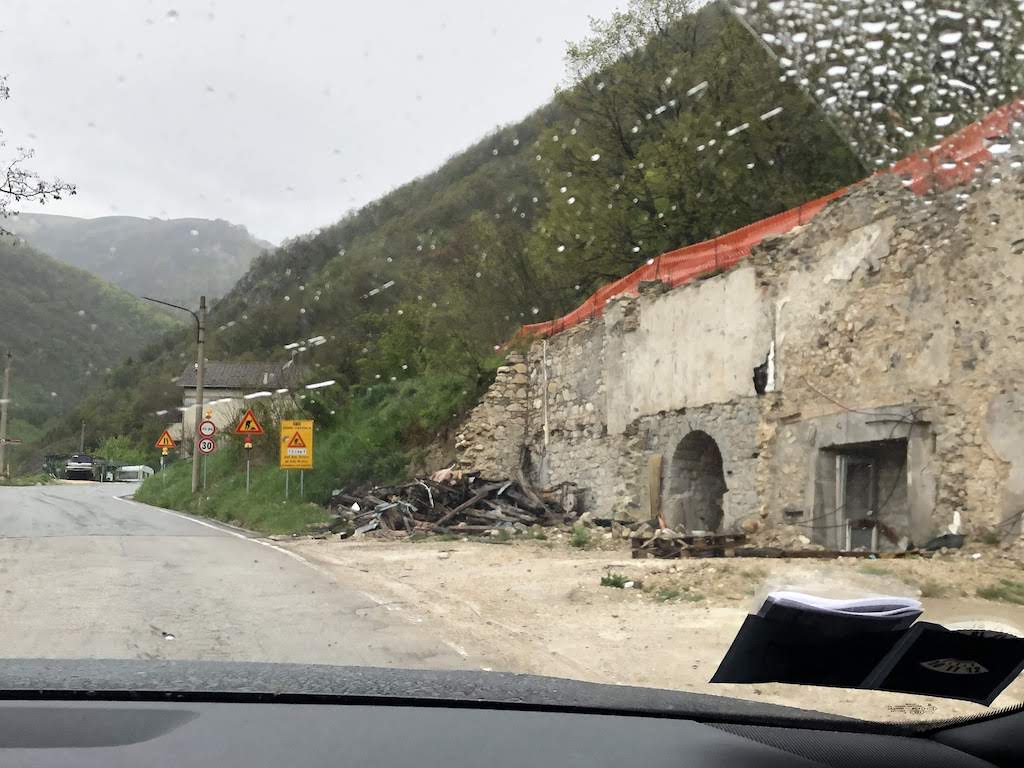


The location in the photo above is near the villages of Acquemoli (Rieti, Lazio) and Pescara del Tronto (Arquata del Tronto, Ascoli Piceno, Marche), which were the most affected by the earthquake.
But the reconstruction seemed to be progressing steadily. By the time we approached the Umbrian side, it had become a new highway.
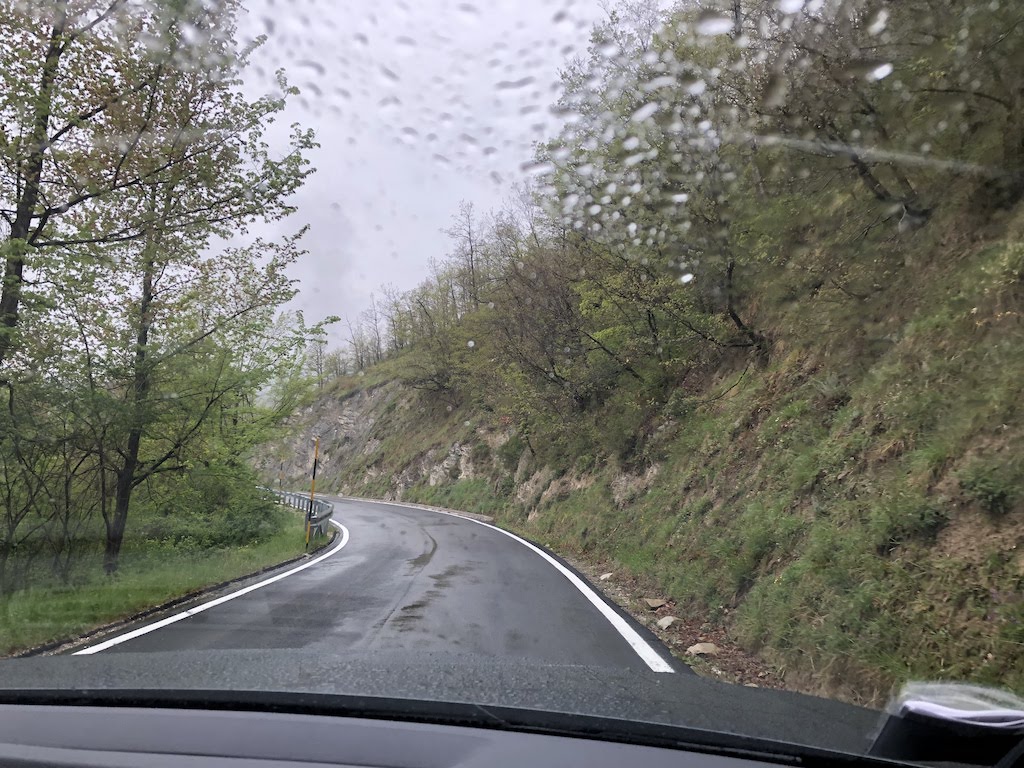
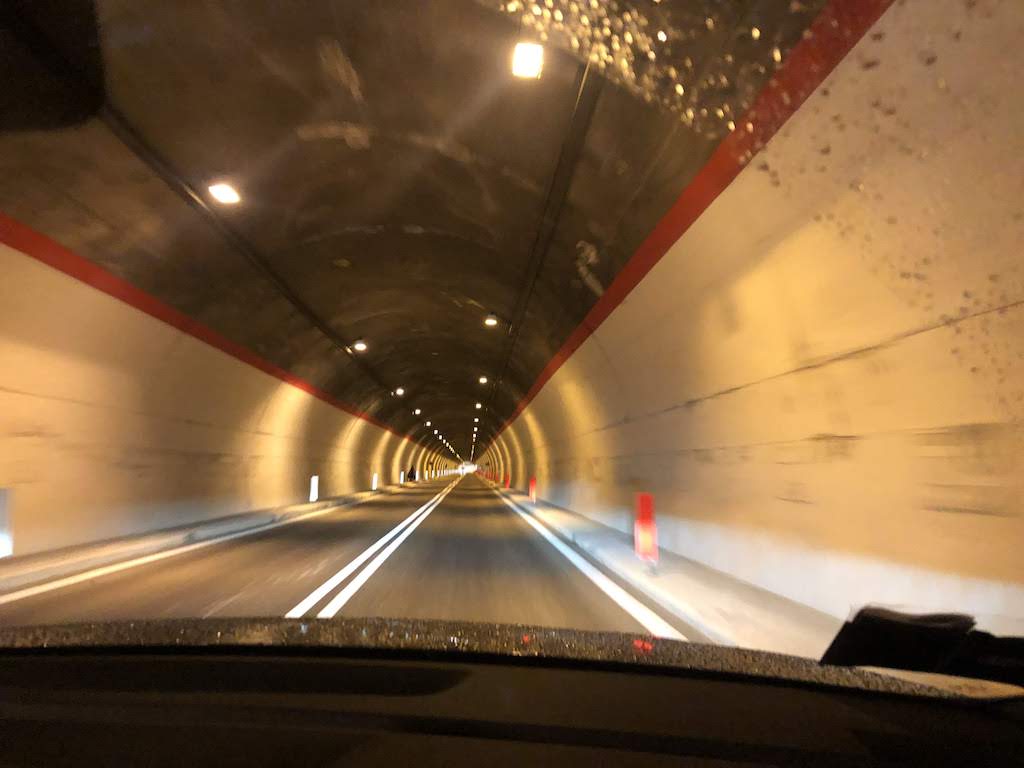
Although we were on a local road from the middle of the road, there was no particular congestion and we arrived at our destination Norcia. However, this most beautiful village in Italy was also severely damaged by the big earthquake three years ago. This area near Norcia was the epicenter of the earthquake.
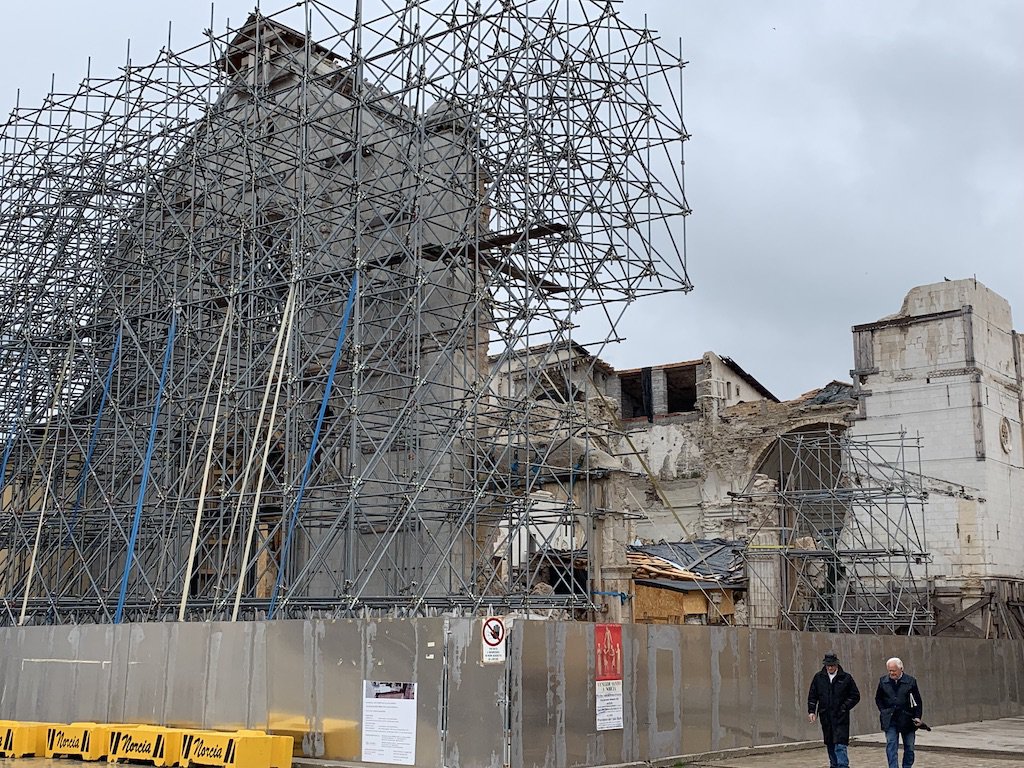
I’ll write more about Norcia in the next post.
